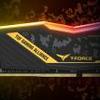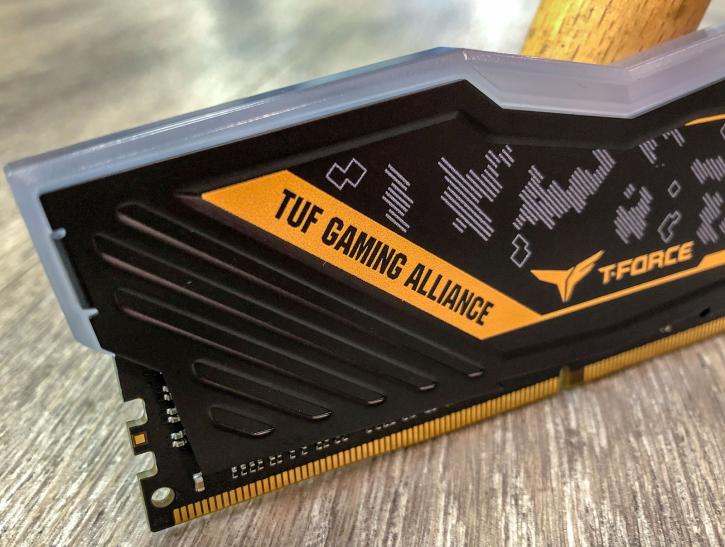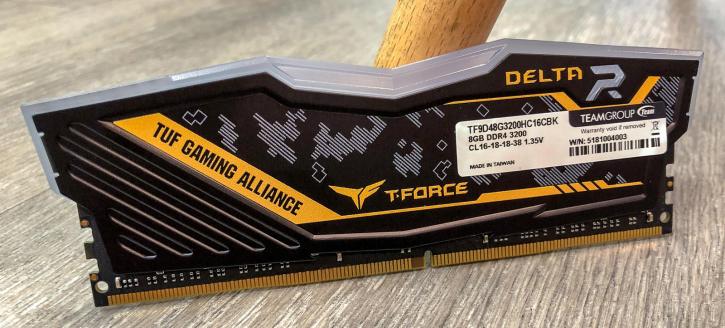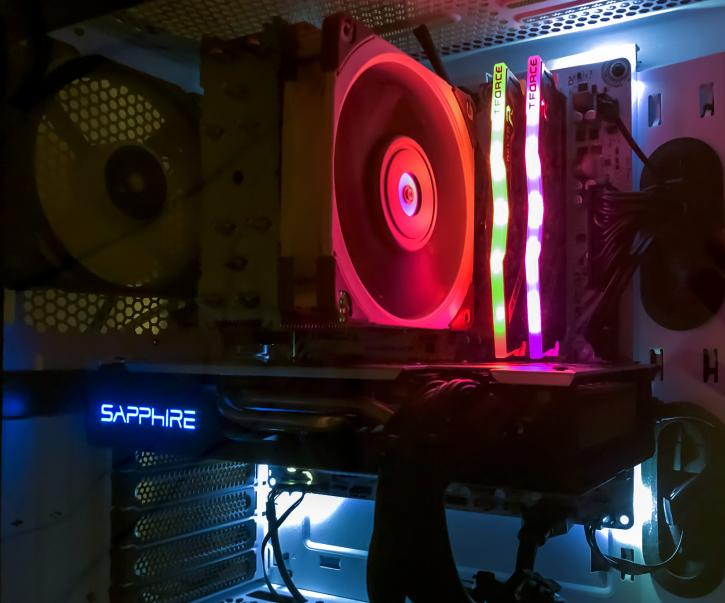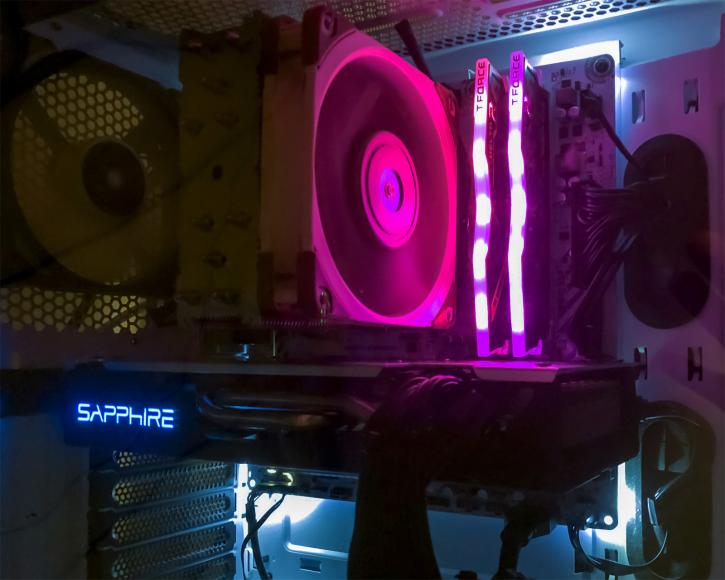Product Gallery
Heatspreaders on memory have been around for a long while but were relatively plain back in the days of DDR3 being mainstream, and DDR4 being but a twinkle in the eye of vendors. Without active airflow, all the heatspreader will do is transfer heat away from the DRAM chips. Naturally, given the regular location for RAM is inside a PC case/rack with ample airflow, this is by design. Whilst memory shouldn't get that warm, shoving more voltage through it will inevitably increase heat output dramatically, to the point where higher rated DDR4 kits actively encourage airflow over them to stay relatively cool. As we well known, memory doesn't like getting hot, just like anything else electronic.
Power to the RGB and control of it requires no extra wires, which is utter music to my ears. The lighting on the kit at hand is a single 'bar' with various zones, meaning that the entire top of your memory stick gets lit up like the Xmas tree that's soon to be in your household. I much prefer this approach over single LED zones, which I don't think looks all that great. As you can see from the photos, the lighting is very much 'there,' but - to my eye - isn't overpowering or in your face. This is the right approach, in my view, as RGB memory is meant to compliment lighting that is already in a system, not overwhelm it and batter it over the head.
I think that's really it for this section. Time to move on, I think. My colleague (though I have never met him) covered the concept of memory timings in his review of the APacer kit some months back, which I'll link here. He did an excellent job of covering the topic, and thus I won't needlessly repeat or re-write he has already said. The things to bear in mind, though, when looking at memory timings, are the following:
Firstly, that lower is better. This is universally the case. To get lower timings that are listed on the memory's spec sheet, however, you may need to end up increasing the voltage going through the DIMMs, or even the SoC. The latter, in particular, was very helpful in stabilising my 3200Mhz memory in the early days of Ryzen Summit Ridge. Timings generally look like this: 16-16-18-36. Afterwards may be listed the XMP profile's operating voltage, as well as (for instance) '2T.' Altogether, these refer to CAS, TRCD, TRP, TRAS, and the Command Rate of the memory kit. I said earlier that we will look into manually tweaking the memory at a later point in this review, but this is well known to be a potentially time-consuming and easily frustrating process. Thus, for the most part, if you just wish to use your new kit of Team Group RGB memory as they intended, nobody will blame you for just using the inbuilt XMP profile!
